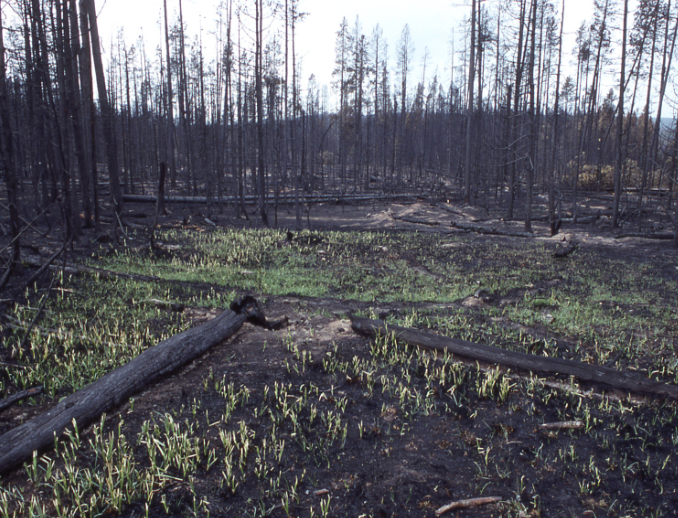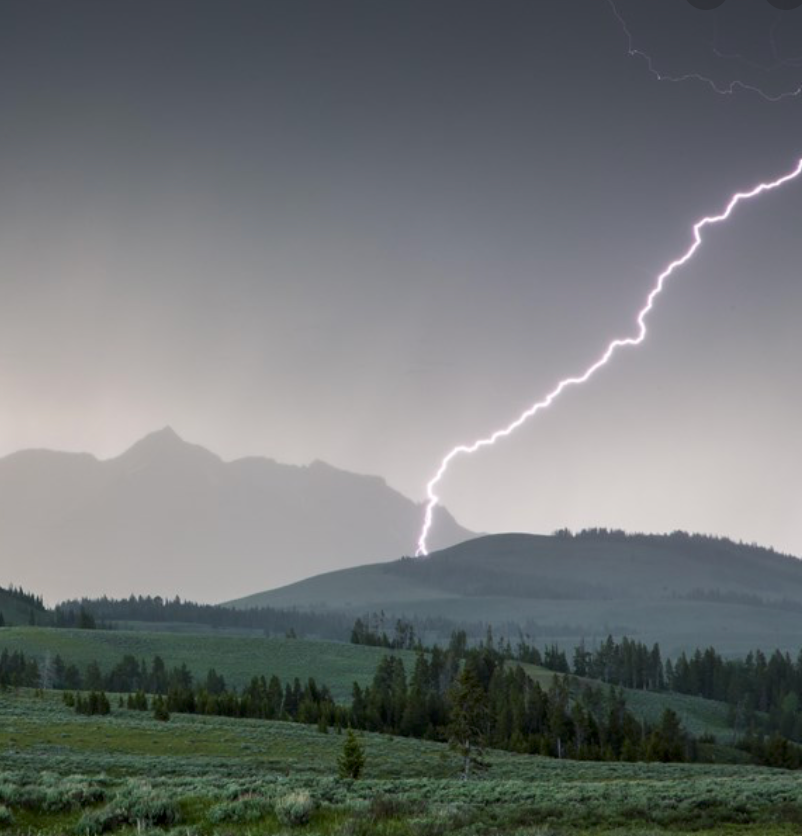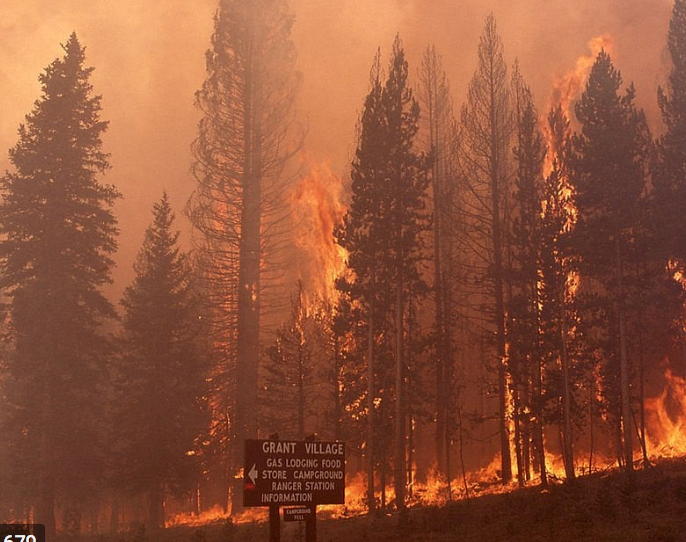Encounter Narrative
- Date: 12/31/2020 11:59 PM
- Location
Description
Yellowstone 2140
I always knew that I wanted to be a firefighter when I grew up, just like my dad and his dad, my ‘papaw’. After all, my name is Aiden, which means ‘little fire’. The guys and gals at the station make jokes about me because of this but I don’t mind because even at the age of 25, I know that I come from a strong line of firefighters who I’ve always been proud to walk in their footsteps. Growing up in Jackson Hole, Wyoming meant that when my dad and papaw went to work for the Helitack Crew during the months of mid June through October, it was an hour and 30 minute drive to Yellowstone National Park. However, once they got there, they rode in a helicopter as wildland firefighters to help respond to fires and sometimes serve as search and rescue. My papaw would tell me, “You have to respect the fire Aiden....it can rip through an acre in no time, devouring everything in its path, but, after the fire has settled it can be the beginning of something beautiful and often is a necessary step in the circle of life”. Both my dad and papaw would take me hiking through Yellowstone and showed me first hand how fire has been a key factor in shaping what is referred to as the Greater Yellowstone Ecosystem. Several native plant species evolved adaptations so they survive and, in some cases, flourish after periodic fires.
Vegetation regrowth after a fire burn

Fire influences ecosystem processes and patterns, such as nutrient cycling and plant community composition and structure. So, while my main job is to fight fires, my mission in Yellowstone is to help manage fires so they don’t get out of control.
Most people don’t know that over 100 years ago, in Yellowstone, lightning was the main cause of dozens of forest fires during a single summer, where most of them would go out naturally after burning less than half an acre. Other fires in the past would annihilate individual or small groups of trees, become ground fires which just smolder, and then eventually would go out on their own.
Lighting strike in Yellowstone National Park

However, our climate has significantly changed since that time. The heating up of our Earth and atmosphere has led to an increased instability of weather patterns; thus we experience more severe weather. These drastic changes have negatively impacted Yellowstone National Park and ultimately changed my life.
When I was ten, I remember my dad telling me about the 2078 caldera collapse in Yellowstone and the impact it had on landscape, nearby water sources and obviously vegetation and animals. I remember being worried that the bison, elk and moose would die because they would have nothing to eat. I was particularly concerned about the grizzlies and the gray wolf.
1988 Yellowstone National Park Fire

According to Yellowstone’s history, I distinctly recall learning about the great fire of 1988 where wind, not lightning, was the main source for the out of control disaster. Multiple fires crossed and ravished more than one million acres in Yellowstone and on surrounding federal lands despite massive efforts to extinguish them. In response to this, the Yellowstone to Yukon Initiative (Y2Y) was created in 1993 for regional conservation by providing a vision for a healthy Yellowstone to Yukon landscape. While the Y2Y Initiative has worked diligently to ensure the safety and security of the surrounding ecosystem, Y2Y cannot control the climate.
It is true, that large fires like the one experienced in 1988 can be necessary for biodiversity; however, they have been problematic, particularly in the last 5 years. An increase of fires in the Greater Yellowstone Ecosystem has been a result of many factors including global warming/climate change but they have been further complicated by the increase of deforestation due to pine beetles and humans as well as an increase of housing developments in these rural areas where fires naturally occur. I recently joined the work efforts of Y2Y and am continuing to learn of the ways in which this organization's broad efforts can have long-lasting positive outcomes for Yellowstone National Park but more importantly, future generations.
One of the major reasons that I am committed to these efforts is the personal impact that all of these factors have had on my personal life. In 2139, Yellowstone National Park experienced another major fire, which was ignited by a transformer short-circuit from a neighboring housing development. This fire raged through the park and with dead dying pine trees, they were perfect fuel for this monstrous blaze. The Helitack Crew was called up, in addition to all surrounding fire fighters available, including some volunteers from out of state. However this time, the Helitack Crew included my father and I working together with the other 6 men in our unit. In my 4 years working with my dad, this was the most serious and dangerous situation that the two of us, together, had encountered. Even though my papaw had retired from the Helitack Crew years before, he called us before we headed out, “Respect the fire. And when you have done everything you can, protect yourself”. Both my dad and I knew that this was papaw’s way of letting us know he was worried.
I remember the chopper dropping us in the park a distance from the quickly approaching line of flames. Our crew in conjunction with other firefighters and volunteers had organized our strategy. What we did not expect was a sudden and extreme change in the wind direction. My dad was now trapped with flames and fire closing in on him from all sides. He knew the risk he was taking and shouted back, “Protect yourself”. I knew at that moment, my dad was gone, but it was also his way of protecting me and the others from anyone else dying on this day. Unfortunately, the fire still took 3 months to manage, which was less than the 5 months it took in 1988. I guess by comparison, so many of us were lucky, but we did lose 2 more fire fighters over the course of this battle. I remain resolved that my dad died doing something that he loved and I was the lucky one to have him as my role model and father.
As part of continuing my father’s legacy of conservation matters through wildfire management, I am committed to my involvement in Y2Y and have been increasingly seeking out opportunities to speak with local and state representatives regarding the importance of doing all we can to create visible change to the policies and laws that ultimately impact global warming and by proxy, climate change. I have no plans of leaving this area, since living this close to Yellowstone National Park, means that my dad is never that far away.
Tiffinnie's Paper: https://tiffreed71.wixsite.com/econarratives/encounter-narrative
Yaseen's Paper: https://eco-collaborate.weebly.com/yellowstone-2140.html
McKenzie's Paper: https://stefanoffeconarratives.weebly.com/encounter-narrative.html
Works Cited
https://www.nps.gov/yell/learn/nature/fire.htm
https://www.nps.gov/yell/learn/management/wildland-fire-program.htm
https://www.nps.gov/yell/getinvolved/sustainability.htm
